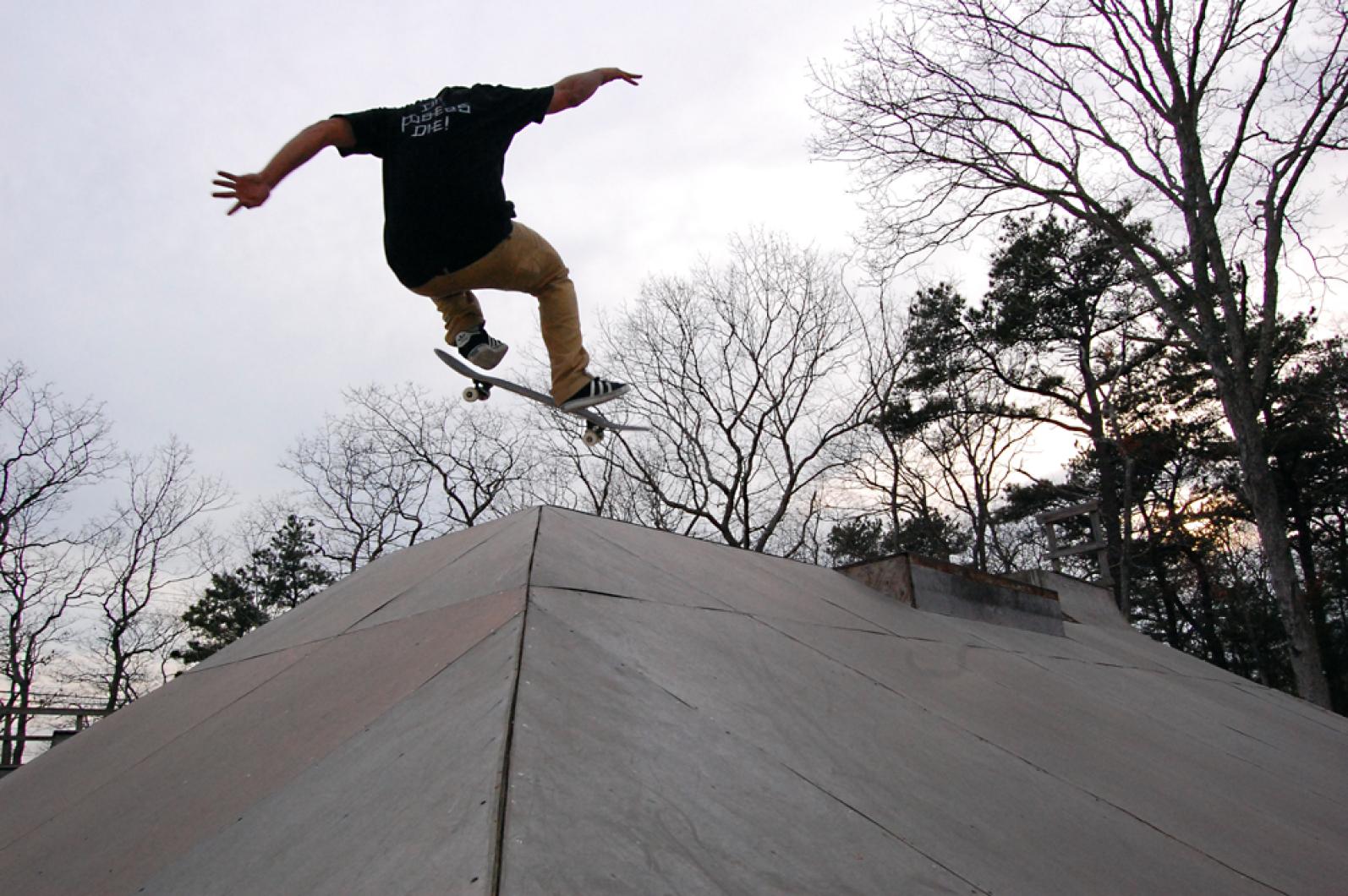Nate Sprague remembers what it was like not to have a skate park on the Island. Lots of running from the cops to avoid hefty fines or a confiscated skateboard.
“It was fun, because we would get chased by the cops,” he joked, sitting on a bench overlooking the park this week. “That was cool, being a little kid. You see it in the movies.”
In truth, it wasn’t nearly as fun as the movies make it out to be. Instead, it forced the young, easygoing skateboarders to choose between their harmless, if somewhat disruptive, pastime, and their reputations with local law enforcement. It turned energetic kids into troublemakers. And it cost a fortune.
“They would either take my skateboard, or the worst was that I got was $50 tickets,” said Nate.
The skate park solved that problem. No more riding in the streets or clogging up the sidewalks. No buying expensive replacement boards, or cleaning out their savings to pay off fines.
Tucked into a small corner of land off of Edgartown-Vineyard Haven Road, across from the regional high school in a lot surrounded by trees, a group of a dozen or so boys who looked to be somewhere between 10 and 25, took turns riding the concrete in the early spring sunshine on Wednesday. They didn’t seem bothered by the fact that their carefree afternoons have been recently threatened by a bid to shut down the park for safety concerns; for the moment, their minds were elsewhere. Calculating their next trick, perhaps. Or carefully observing that of a fellow boarder.
“Look at how nice this day is,” said veteran skateboarder Richard Madeiros. “We just want to skateboard. It’s just like anything else. Painters want to paint, I want to skateboard.”
Richard has been skating since sophomore year in high school; he’s now 22. And he’s stayed well invested in his sport; he’s out at the park most days of the week after work, and holds skate clinics for the younger kids in the summer. He said the news that an insurance inspector had found the skate park unsafe could threaten the large skate community on the Island — which boosts social skills in the youngest boarders and keeps the older ones active and involved.
“It’s become a part of people’s lives, to the point where if it was gone, it would affect a lot of people,” he said of the park. “I think it’s going to be really bad for the Island. It’s become a tourist attraction. Lots of people come here from off-Island and spend money to get here. There are groups that come here just to skateboard. Families come here and set up for the day.”
As for the safety concerns, the Wednesday afternoon skaters said people who frequent the park all do their best to lend a hand and keep it properly maintained.
“All the trash and stuff like that, before I leave I’ll pick up everything I can, and I usually come here and sweep up the park every two weeks or so,” said Jason Cournoyer, a 16-year-old sophomore at the regional high school.
Other upkeep would take a bit more money and effort, and Nate said he hopes the recent attention will encourage people to pitch in. “Any kind of attention is good attention. Everyone that’s driving by right now is looking at [the park] because they read the article. So something has to come of it,” he said, adding that the best way to make the place safer would be to replace the wooden elements with concrete.
Walter Malsch, a 20-year-old graduate of the regional high school, has been skating on and off for years, and thinks the safety concerns are exaggerated. “It’s a skate park. There are going to be accidents,” he said. “You have to assume some risk, but you’ve got to know your limit.”
“If you don’t feel like you can do something, don’t do it,” agreed Jason, who was part of the volunteer effort to build the park in 2003, after a 16-year campaign by the Martha’s Vineyard Skate Park Association to finance construction and gain public support. He now skates as often as his high school football schedule will allow. “No one is here to force you to do anything, it’s skate at your own risk. It’s just like any other sport. You play football at your own risk,” he said.
For kids who don’t play traditional after-school sports, Walter said the park keeps many active and outdoors. “It’s really good for the high school kids, because they have something to do after school,” he said, adding that the park actually makes the sport less dangerous for skaters than open roads and sidewalks. “If you grow up in a skate park, you become much better than you would imagine,” he said.
Add in summer skate clinics, like the ones offered for free last year by Richard, and kids have even more opportunities to learn. “We were doing it basically to test the waters, see how much we could do and just get more kids into the system of skateboarding and getting good. When you start learning stuff you feel more confident about going out and enjoying it,” Richard said.
And as for the park itself, he said it’s difficult to explain the environment that it fosters. “I don’t know how to describe it. It’s very friendly. Nobody that comes here hates somebody else. Everybody just has a mutual respect for skateboarding. You ride a skateboard, I’ll ride it with you,” he said.






Comments
Comment policy »